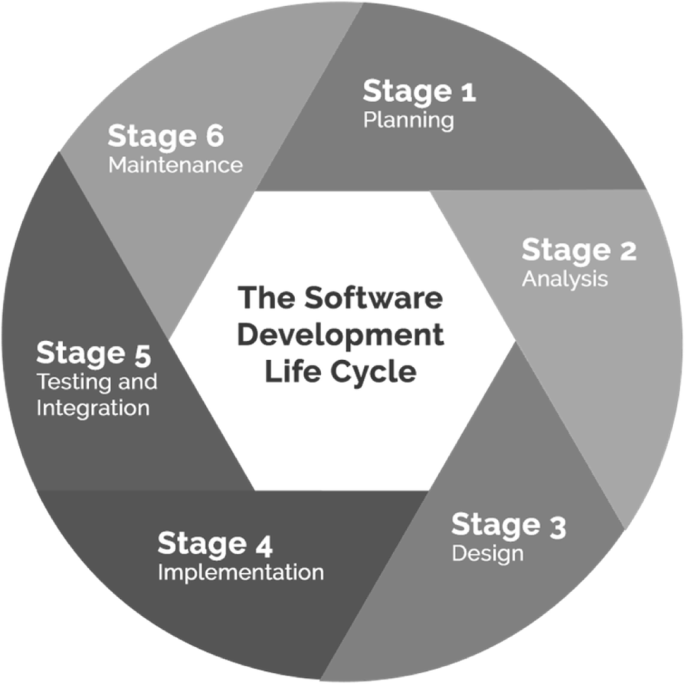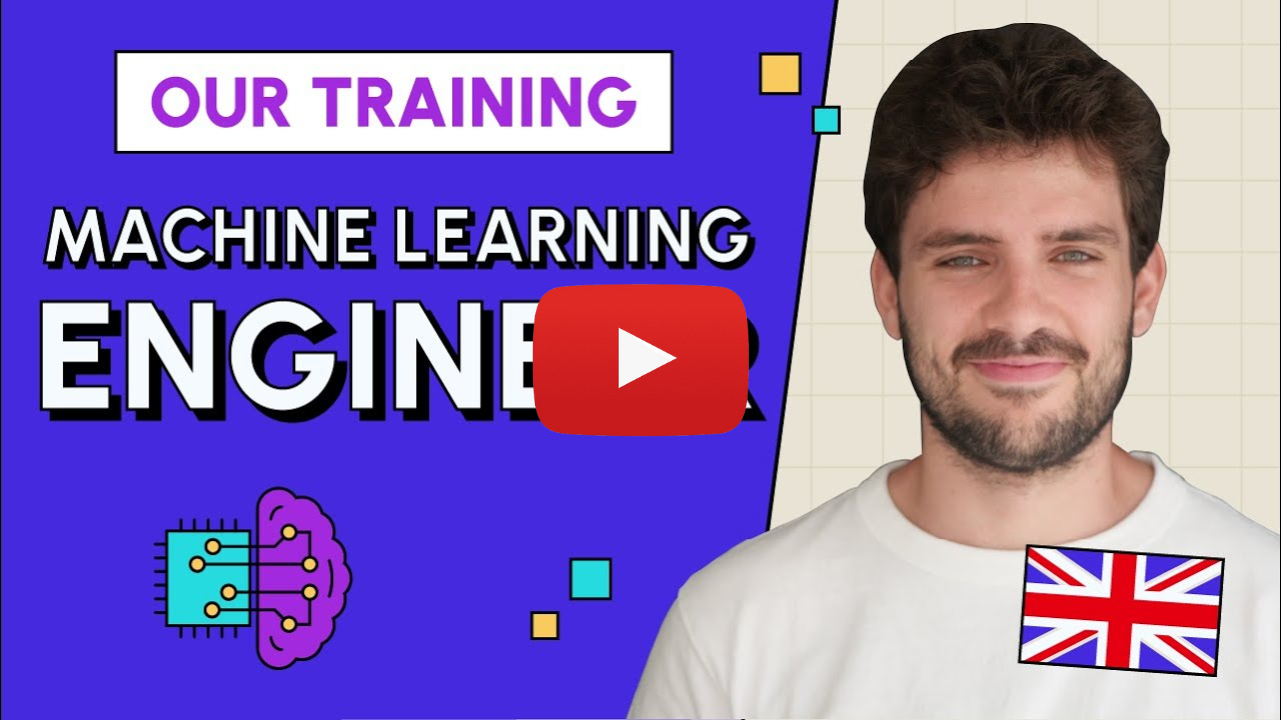All Categories
Featured
Table of Contents
- – Machine Learning Course Things To Know Before ...
- – Not known Facts About Ai Engineer Vs. Software...
- – All about 5 Best + Free Machine Learning Engi...
- – A Biased View of Artificial Intelligence Soft...
- – The Main Principles Of I Want To Become A Ma...
- – 🔥 Machine Learning Engineer Course For 2023...
- – Getting The Certificate In Machine Learning ...
Some individuals assume that that's dishonesty. Well, that's my entire profession. If somebody else did it, I'm going to utilize what that individual did. The lesson is putting that apart. I'm compeling myself to analyze the possible remedies. It's even more concerning consuming the material and trying to use those concepts and less concerning finding a collection that does the work or finding somebody else that coded it.
Dig a little bit deeper in the math at the start, so I can develop that foundation. Santiago: Finally, lesson number 7. This is a quote. It claims "You need to understand every detail of a formula if you intend to utilize it." And after that I claim, "I assume this is bullshit advice." I do not think that you have to comprehend the nuts and screws of every algorithm prior to you utilize it.
I have actually been making use of neural networks for the lengthiest time. I do have a sense of how the gradient descent works. I can not explain it to you now. I would have to go and examine back to actually obtain a better intuition. That doesn't indicate that I can not resolve things utilizing neural networks? (29:05) Santiago: Trying to require people to think "Well, you're not mosting likely to be successful unless you can clarify each and every single detail of just how this works." It goes back to our sorting instance I believe that's just bullshit guidance.
As an engineer, I've worked on many, numerous systems and I have actually utilized numerous, numerous points that I do not comprehend the nuts and bolts of just how it functions, despite the fact that I recognize the effect that they have. That's the final lesson on that string. Alexey: The amusing thing is when I think regarding all these collections like Scikit-Learn the algorithms they utilize inside to execute, for example, logistic regression or another thing, are not the like the formulas we research in artificial intelligence classes.
Machine Learning Course Things To Know Before You Get This
So even if we attempted to discover to obtain all these fundamentals of artificial intelligence, at the end, the algorithms that these libraries make use of are various. ? (30:22) Santiago: Yeah, absolutely. I think we need a great deal a lot more pragmatism in the market. Make a great deal even more of an effect. Or concentrating on supplying value and a bit less of purism.

I typically speak to those that want to function in the sector that want to have their impact there. I do not risk to speak concerning that because I do not understand.
Right there outside, in the sector, materialism goes a long way for certain. (32:13) Alexey: We had a comment that stated "Feels even more like inspirational speech than discussing transitioning." So possibly we ought to change. (32:40) Santiago: There you go, yeah. (32:48) Alexey: It is a great motivational speech.
Not known Facts About Ai Engineer Vs. Software Engineer - Jellyfish
One of the things I desired to ask you. Initially, let's cover a couple of things. Alexey: Allow's begin with core devices and structures that you need to find out to actually shift.
I understand Java. I know how to make use of Git. Perhaps I know Docker.
What are the core devices and structures that I require to find out to do this? (33:10) Santiago: Yeah, absolutely. Wonderful question. I believe, leading, you ought to begin learning a bit of Python. Because you currently understand Java, I don't assume it's mosting likely to be a massive transition for you.
Not since Python is the same as Java, but in a week, you're gon na get a great deal of the distinctions there. Santiago: After that you get specific core devices that are going to be made use of throughout your entire career.
All about 5 Best + Free Machine Learning Engineering Courses [Mit
That's a library on Pandas for data adjustment. And Matplotlib and Seaborn and Plotly. Those three, or among those three, for charting and showing graphics. You obtain SciKit Learn for the collection of maker discovering algorithms. Those are tools that you're mosting likely to have to be making use of. I do not advise just going and learning regarding them out of the blue.
Take one of those training courses that are going to begin introducing you to some problems and to some core ideas of equipment knowing. I don't keep in mind the name, but if you go to Kaggle, they have tutorials there for cost-free.
What's great regarding it is that the only need for you is to recognize Python. They're going to offer an issue and tell you just how to make use of decision trees to address that certain problem. I assume that procedure is exceptionally powerful, because you go from no maker finding out background, to understanding what the issue is and why you can not address it with what you understand right currently, which is straight software program engineering methods.
A Biased View of Artificial Intelligence Software Development
On the other hand, ML designers concentrate on structure and deploying equipment learning designs. They concentrate on training versions with data to make predictions or automate tasks. While there is overlap, AI engineers handle more varied AI applications, while ML engineers have a narrower concentrate on maker knowing algorithms and their useful execution.

Equipment understanding designers focus on developing and releasing machine learning models into manufacturing systems. On the other hand, data researchers have a broader duty that includes information collection, cleansing, expedition, and structure versions.
As companies increasingly take on AI and maker understanding modern technologies, the need for competent professionals expands. Machine learning designers work on innovative jobs, add to development, and have affordable salaries.
ML is essentially different from typical software application development as it concentrates on training computer systems to gain from information, instead of programs specific guidelines that are performed systematically. Unpredictability of end results: You are possibly used to composing code with foreseeable outcomes, whether your feature runs as soon as or a thousand times. In ML, nonetheless, the results are much less certain.

Pre-training and fine-tuning: How these models are trained on vast datasets and after that fine-tuned for certain tasks. Applications of LLMs: Such as text generation, belief evaluation and details search and access.
The Main Principles Of I Want To Become A Machine Learning Engineer With 0 ...
The capability to take care of codebases, merge adjustments, and solve problems is simply as essential in ML development as it remains in standard software jobs. The abilities established in debugging and testing software applications are very transferable. While the context could change from debugging application reasoning to identifying problems in information processing or model training the underlying principles of systematic examination, theory screening, and repetitive improvement are the same.
Machine understanding, at its core, is heavily dependent on data and possibility theory. These are crucial for understanding just how formulas discover from data, make forecasts, and assess their performance. You need to consider coming to be comfy with concepts like analytical importance, circulations, hypothesis screening, and Bayesian thinking in order to style and translate versions effectively.
For those curious about LLMs, a comprehensive understanding of deep knowing architectures is advantageous. This includes not just the technicians of semantic networks however also the architecture of details designs for different usage cases, like CNNs (Convolutional Neural Networks) for image handling and RNNs (Frequent Neural Networks) and transformers for consecutive information and natural language handling.
You should be conscious of these issues and discover techniques for determining, minimizing, and communicating concerning predisposition in ML versions. This consists of the possible effect of automated choices and the moral ramifications. Many models, particularly LLMs, need considerable computational resources that are often offered by cloud platforms like AWS, Google Cloud, and Azure.
Building these abilities will not just facilitate a successful transition right into ML however likewise guarantee that designers can add effectively and sensibly to the improvement of this dynamic field. Concept is essential, but nothing defeats hands-on experience. Begin dealing with tasks that enable you to apply what you have actually found out in a functional context.
Build your jobs: Start with straightforward applications, such as a chatbot or a message summarization tool, and progressively increase intricacy. The field of ML and LLMs is quickly evolving, with new innovations and modern technologies emerging consistently.
🔥 Machine Learning Engineer Course For 2023 - Learn ... for Beginners
Contribute to open-source jobs or compose blog messages regarding your knowing journey and tasks. As you get know-how, begin looking for possibilities to integrate ML and LLMs into your job, or look for new functions focused on these innovations.

Potential use situations in interactive software, such as referral systems and automated decision-making. Understanding unpredictability, fundamental analytical actions, and chance distributions. Vectors, matrices, and their function in ML formulas. Mistake reduction methods and gradient descent clarified just. Terms like version, dataset, features, labels, training, reasoning, and validation. Information collection, preprocessing techniques, version training, examination procedures, and implementation factors to consider.
Choice Trees and Random Woodlands: Instinctive and interpretable designs. Support Vector Machines: Optimum margin classification. Matching issue types with proper designs. Balancing performance and complexity. Fundamental structure of semantic networks: neurons, layers, activation features. Split computation and forward breeding. Feedforward Networks, Convolutional Neural Networks (CNNs), Recurring Neural Networks (RNNs). Image recognition, sequence prediction, and time-series evaluation.
Continual Integration/Continuous Implementation (CI/CD) for ML process. Version monitoring, versioning, and efficiency tracking. Discovering and resolving changes in version efficiency over time.
Getting The Certificate In Machine Learning To Work

You'll be introduced to three of the most appropriate elements of the AI/ML self-control; supervised learning, neural networks, and deep understanding. You'll comprehend the distinctions in between conventional programming and device learning by hands-on growth in monitored discovering prior to building out complex distributed applications with neural networks.
This program offers as a guide to device lear ... Program Extra.
Table of Contents
- – Machine Learning Course Things To Know Before ...
- – Not known Facts About Ai Engineer Vs. Software...
- – All about 5 Best + Free Machine Learning Engi...
- – A Biased View of Artificial Intelligence Soft...
- – The Main Principles Of I Want To Become A Ma...
- – 🔥 Machine Learning Engineer Course For 2023...
- – Getting The Certificate In Machine Learning ...
Latest Posts
The Best Online Coding Interview Prep Courses For 2025
How To Prepare For A Software Or Technical Interview – A Step-by-step Guide
How To Self-study For A Faang Software Engineer Interview
More
Latest Posts
The Best Online Coding Interview Prep Courses For 2025
How To Prepare For A Software Or Technical Interview – A Step-by-step Guide
How To Self-study For A Faang Software Engineer Interview